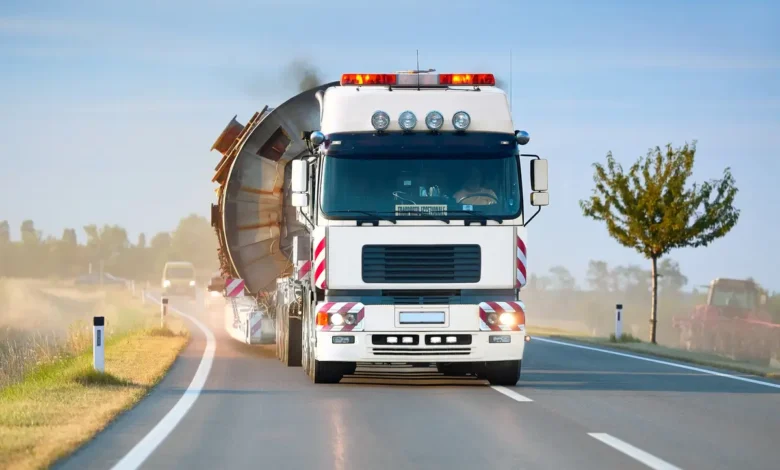How To Ship Oversized Loads Safely And Efficiently

Oversized shipment might be difficult to manage. They can make the excitement of a new project turn quickly into a logistical nightmare.
Permitting delays can feel difficult to handle. Finding the right equipment or carrier can seem impossible. Unexpected route restrictions and obstacles are also a force to reckon with. Safety concerns weigh heavily on your mind. What if something goes wrong? Who’s liable? Is there a better way?
This comprehensive guide will show you how.
1. Understanding Oversized Load Regulations
It helps to understand the basics of oversized loads before you embark on the journey. What exactly is an “oversized load?” In the US, any load exceeding 8.5 feet wide, 13.5 feet high, or 48 feet long falls into this category.
Besides these size limits, weight limits also apply. They vary considerably from one jurisdiction to another. but these can vary depending on the state, type of road, and number of axles on your vehicle. Typically, the gross weight limit for a standard five-axle semi-trailer is 80,000 pounds. However, special permits can allow for heavier loads.
Regulations differ from state to state and even within regions. You’ll need to be aware of specific rules for each location your shipment will travel through. Make use of government-provided resources to understand these specifics.
Permits are essential for oversized loads. Failing to obtain the necessary permits can result in hefty fines, delays, or even having your shipment impounded. You can find up-to-date information and permit applications on government websites.
2. Pre-Shipment Planning
Careful planning is the cornerstone of any successful oversized shipment. Before you even think about moving your cargo, you’ll need to gather crucial information. Start with meticulous measurements of your load. You must know the exact dimensions and weight of your cargo. This will help you select the right equipment and obtain the appropriate permits.
Next, research your route thoroughly. Identify potential obstacles like narrow tunnels or low bridges. Some roads are also weight-restricted and you can’t use them if your cargo exceeds a certain weight. You might need to consider alternate routes or even disassemble your cargo to make it fit.
Choosing the right carrier is another critical step. Look for a heavy haul trucking company with extensive experience in hauling oversized loads and a proven track record of safety and reliability. Check their safety ratings. Also, ask for references to verify their reputation. A reputable carrier will have well-maintained equipment specifically designed for oversized loads.
They’ll also have a team of experienced drivers trained in the unique challenges of hauling large cargo. Ensure they have comprehensive insurance coverage that includes cargo liability and protects your investment in case of accidents or damage.
3. Ensuring Safety Throughout Transit
Safety is paramount during heavy equipment transport. You’ll need to be extra careful to protect your cargo. Besides, the crew and other road users also need to be safe. So, you must secure the load properly. Use appropriate straps, chains, or other restraints to prevent shifting or damage during transit.
You may also need to use escort vehicles to alert other drivers to the presence of an oversized load and help guide the transport safely.
Remember, oversized loads often have special speed restrictions. You’ll need to follow these limits and adhere to any additional driving guidelines that apply. Even with careful planning, things can go wrong. Have contingency plans in place for breakdowns, accidents, or unexpected delays.
4. Leveraging Technology For Efficiency
In today’s digital age, technology can come in handy for oversized shipping. GPS tracking allows you to monitor your shipment’s location in real time. You’ll always know where your cargo is and when it’ll arrive.
Another technology you may want to employ is load planning software. This will help you distribute weight optimally. This ensures stability and safety during transit. It also helps you comply with weight restrictions on bridges and roads.
Communication platforms streamline collaboration with your carriers. They allow you to share updates with all concerned persons and address arising matters.
Electronic logging devices, or ELDs, are now mandatory for most commercial vehicles. These devices track a driver’s hours of service, helping you comply with regulations and prevent fatigue-related accidents.
Conclusion
Shipping oversized loads doesn’t have to be a headache. You just have to plan meticulously and mobilize the right tools. This way, you’ll deliver your cargo in excellent condition.
If the process seems complex, team up with a third-party logistics provider (3PL). These experts can handle the details for you, from permitting to selecting the right carrier.
Don’t forget about insurance. Standard cargo insurance may not cover the unique risks associated with oversized loads. Look into specialized policies to ensure your valuable cargo is protected.
Finally, build strong relationships with your carriers. Good communication and trust are your winning point in these kinds of shipments.



